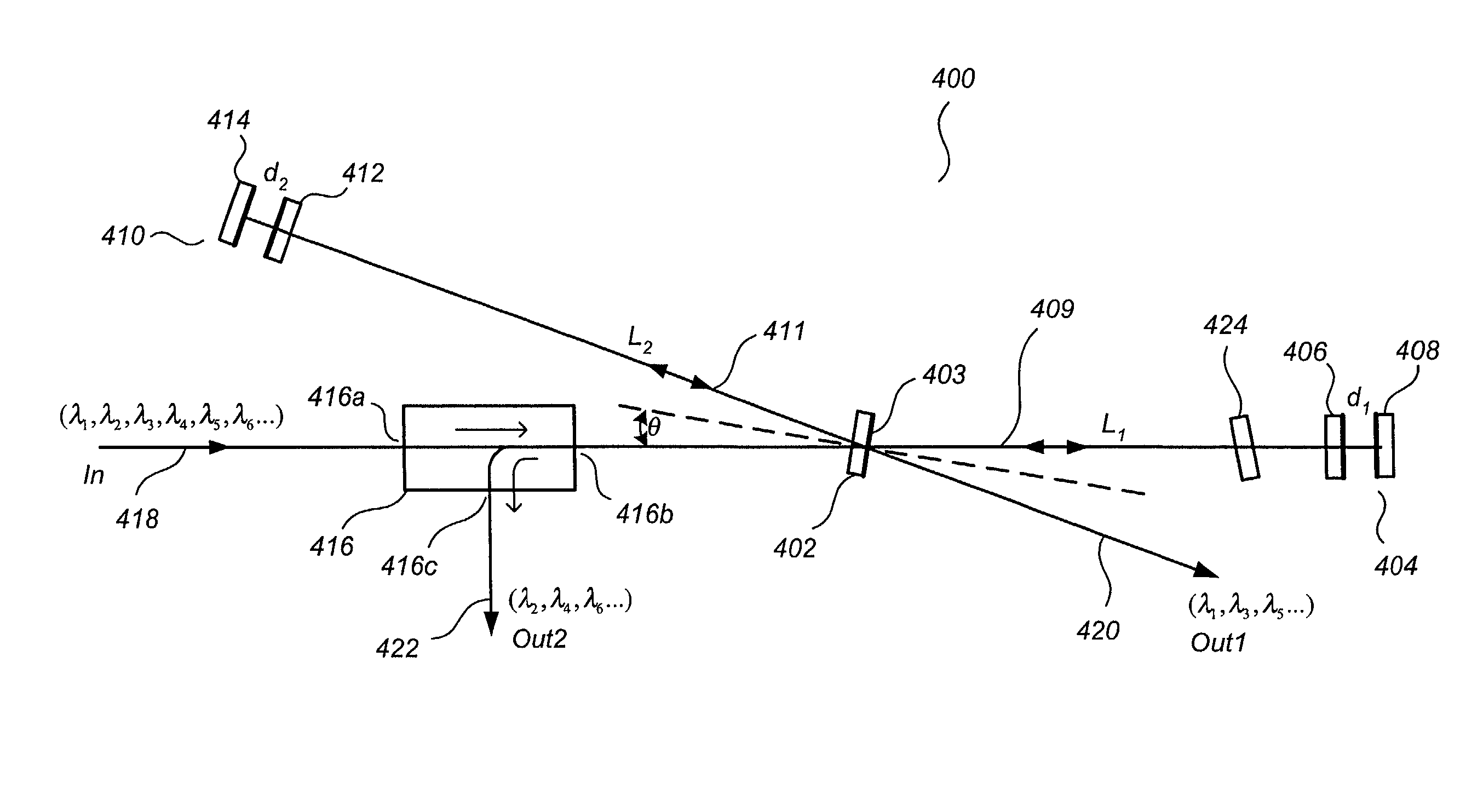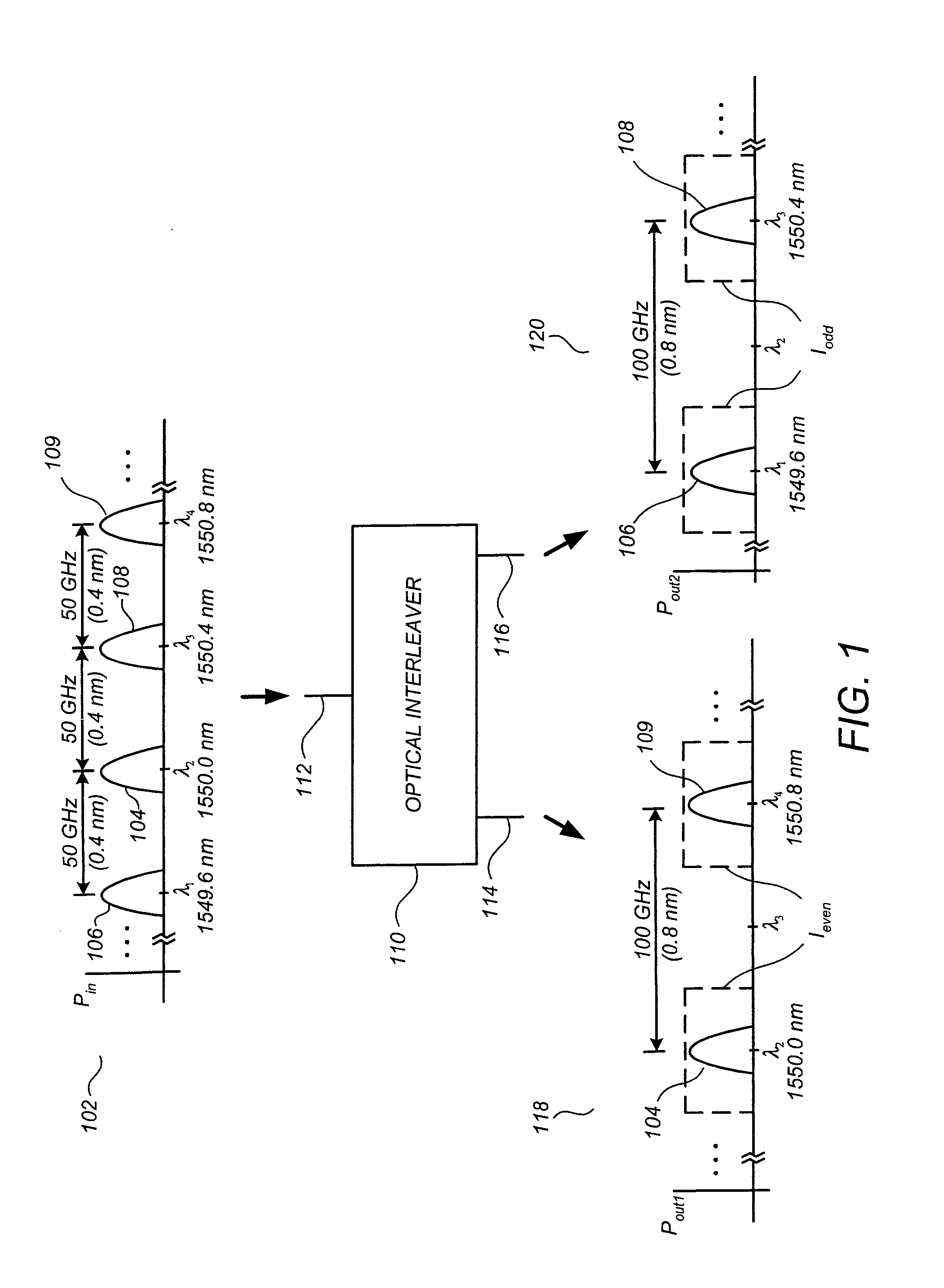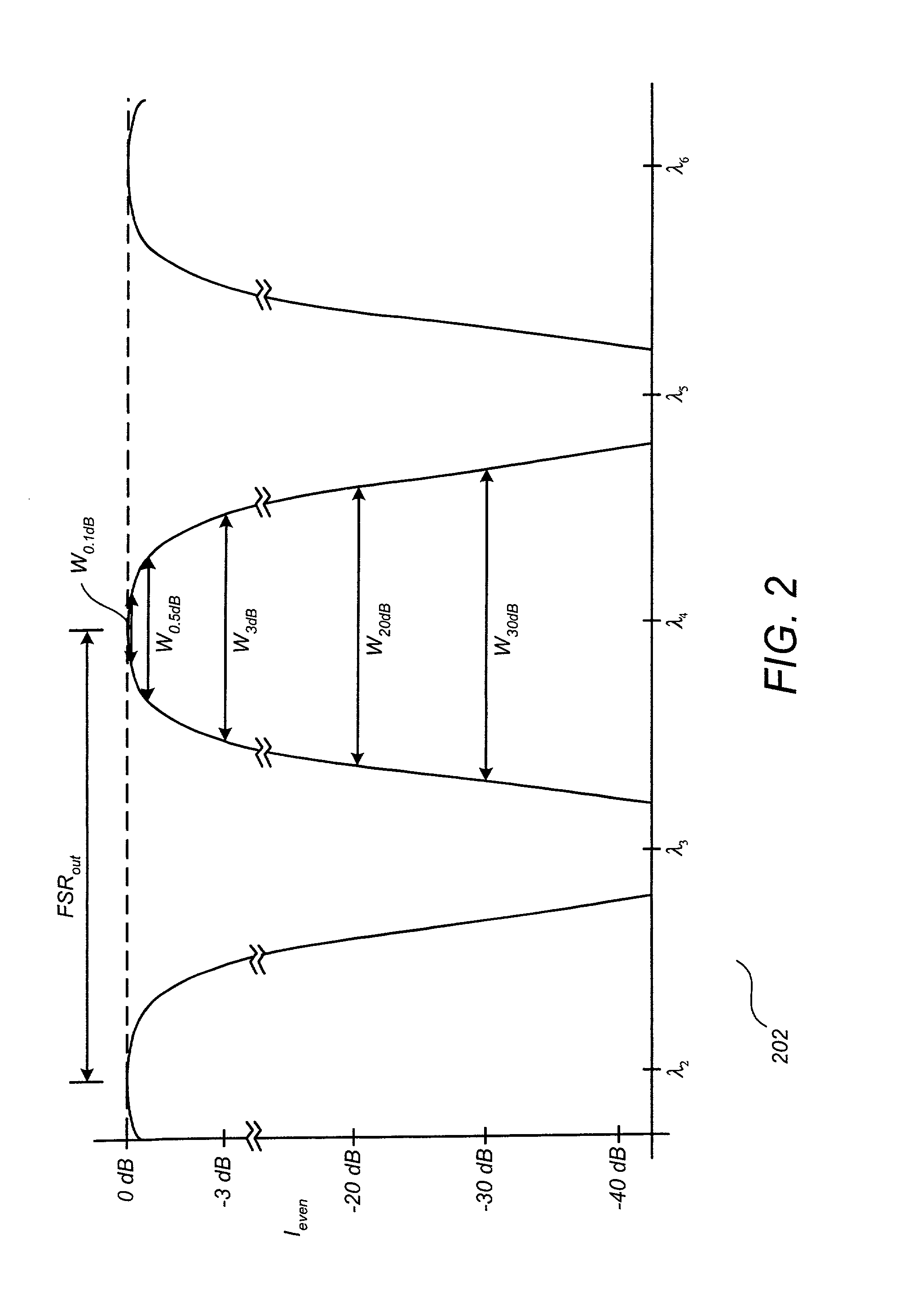Optical interleaving with enhanced spectral response and reduced polarization sensitivity
- Summary
- Abstract
- Description
- Claims
- Application Information
AI Technical Summary
Benefits of technology
Problems solved by technology
Method used
Image
Examples
Embodiment Construction
[0038] FIG. 4 illustrates an optical interleaver 400 in accordance with a preferred embodiment. Optical interleaver 400 comprises a beamsplitter 402 having a partially reflective surface 403, a first resonant cavity 404 having an inner mirror 406 and an outer mirror 408, a second resonant cavity 410 having an inner mirror 412 and an outer mirror 414, and a circulator 416 comprising a first port 416a, a second port 416b, and a third port 416c. At an input 418 coupled to first port 416a of circulator 416 is an incident beam containing a WDM signal comprising a plurality of channels at center wavelengths .lambda..sub.1, .lambda..sub.2, .lambda..sub.3, .lambda..sub.4, .lambda..sub.5, .lambda..sub.6, . . . which are usually, but not necessarily, equally spaced with a channel spacing .DELTA.f. By way of example and not by way of limitation, the channel spacing .DELTA.f may be 50 GHz, as exemplified by plot 102 of FIG. 1, supra. At a first output 420 coupled to partially reflective surface...
PUM
 Login to View More
Login to View More Abstract
Description
Claims
Application Information
 Login to View More
Login to View More - R&D
- Intellectual Property
- Life Sciences
- Materials
- Tech Scout
- Unparalleled Data Quality
- Higher Quality Content
- 60% Fewer Hallucinations
Browse by: Latest US Patents, China's latest patents, Technical Efficacy Thesaurus, Application Domain, Technology Topic, Popular Technical Reports.
© 2025 PatSnap. All rights reserved.Legal|Privacy policy|Modern Slavery Act Transparency Statement|Sitemap|About US| Contact US: help@patsnap.com



